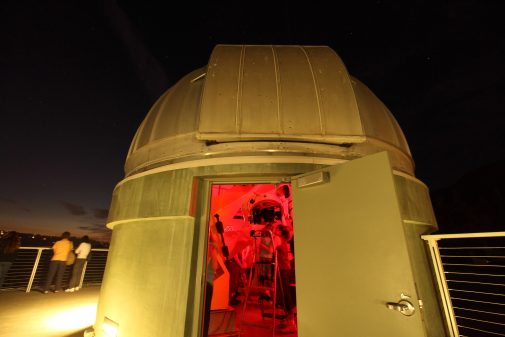Jupiter Jumps into June Viewing
By
Westmont
 Jupiter rises into view during the monthly public viewing of the starts on Friday, June 16, beginning about 8 p.m. and lasting for several hours at the Westmont Observatory. This may be the final chance to see the planet with the college’s eight-inch refracting telescope during this summer’s viewings in Montecito.
Jupiter rises into view during the monthly public viewing of the starts on Friday, June 16, beginning about 8 p.m. and lasting for several hours at the Westmont Observatory. This may be the final chance to see the planet with the college’s eight-inch refracting telescope during this summer’s viewings in Montecito.
“It should still be high enough in the sky for some decent views early in the evening,” says Thomas Whittemore, Westmont physics instructor. “And, if the night is steady and clear, our visitors should be able to glean some details on the gas giant’s surface.”
Westmont hosts the public viewings every third Friday of the month in conjunction with the Santa Barbara Astronomical Unit (SBAU), whose members bring their own telescopes to the college for the public to gaze through.
Later in the evening, SBAU club members may be able to get a glimpse of the ringed-planet Saturn. “Saturn’s rings are heavily tilted from our perspective now so, if some club members are able to get a steady view of the planet, the public should be able to see the break between the A and the B rings,” Whittemore says. “This break is known as the Cassini Division.”
The globular cluster Messier 3 will be at the top of the sky during viewing with Westmont’s Keck Telescope, one of the most powerful on California’s Central Coast. “At about 33,900 light-years from Earth, M-3 is one of the largest and brightest star clusters,” Whittemore says. “It’s made up of about 500,000 stars and is estimated to be 8 billion years old, making it one of the oldest formations in our galaxy. This globular giant was already half its current age when our own sun was formed.”
The observatory is between Russell Carr Field and the track and field/soccer complex. Free parking is available near the baseball field.
Filed under
Academics, Alumni, Campus Events, Faculty and Staff, Observatory, Press Releases